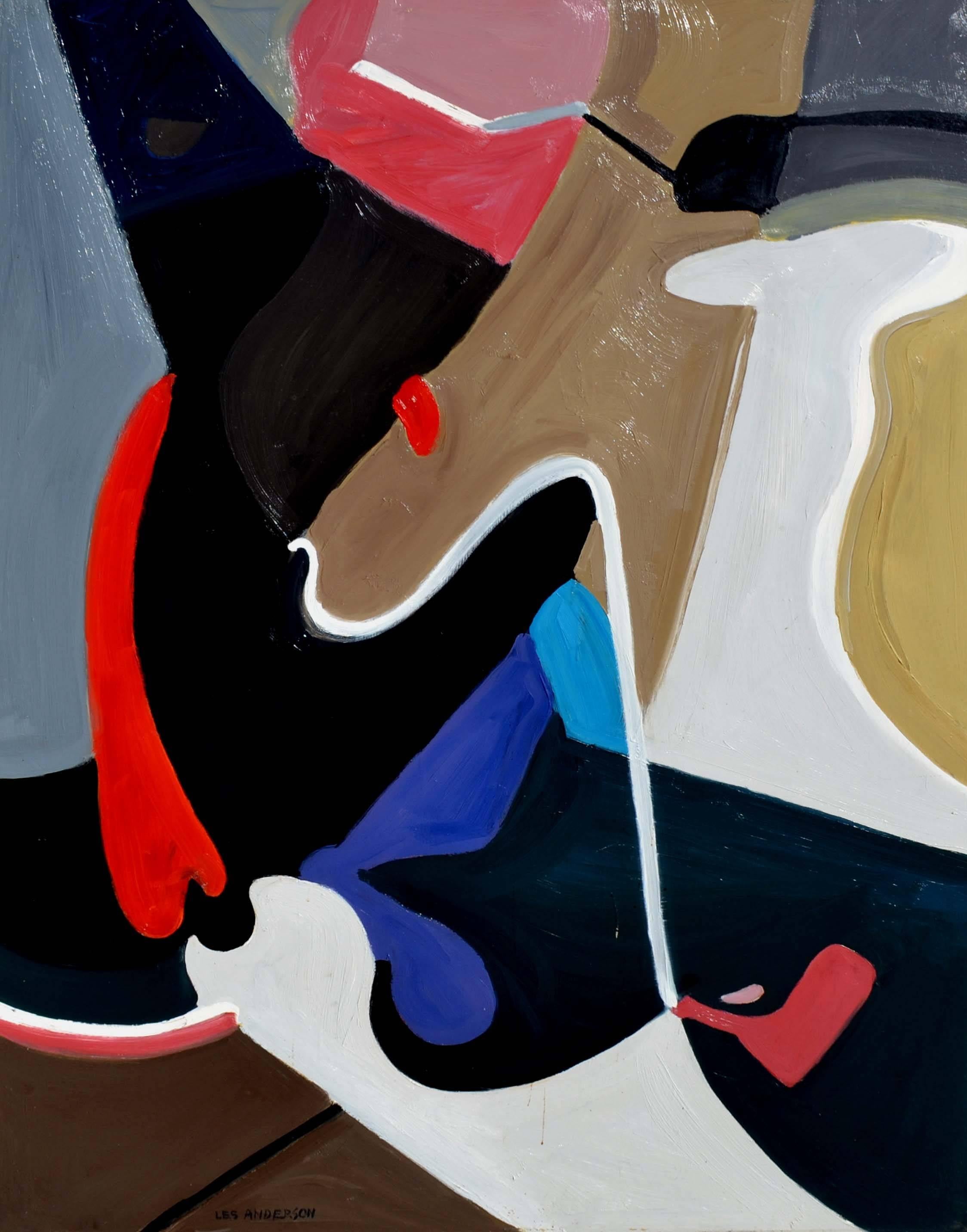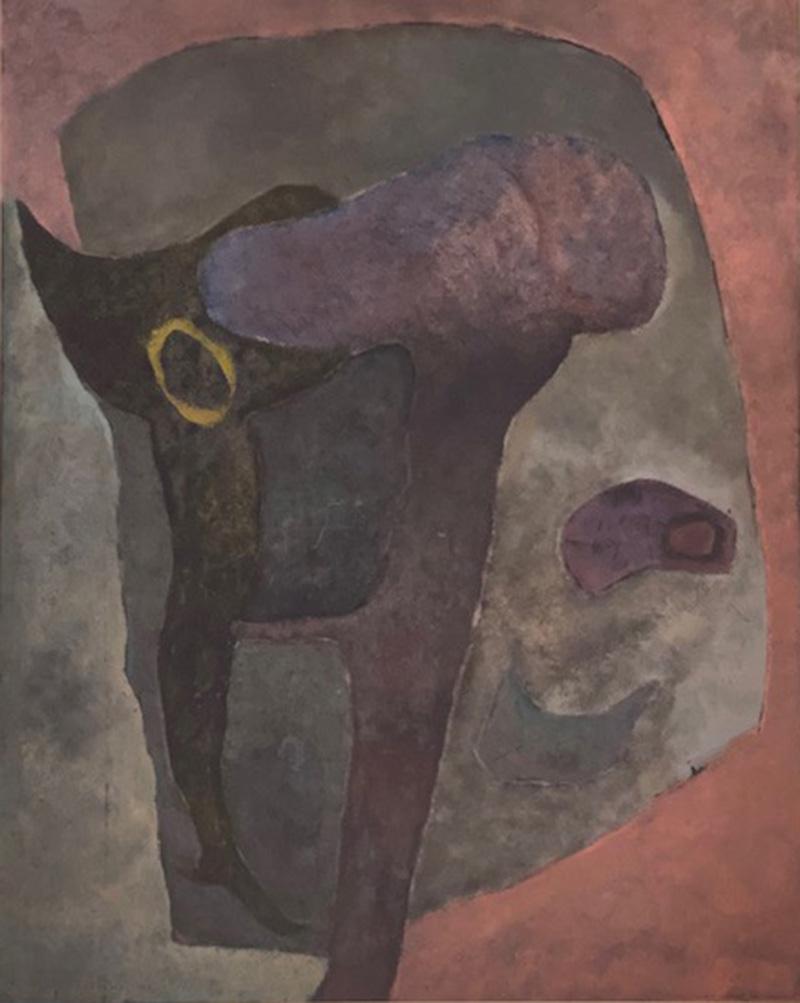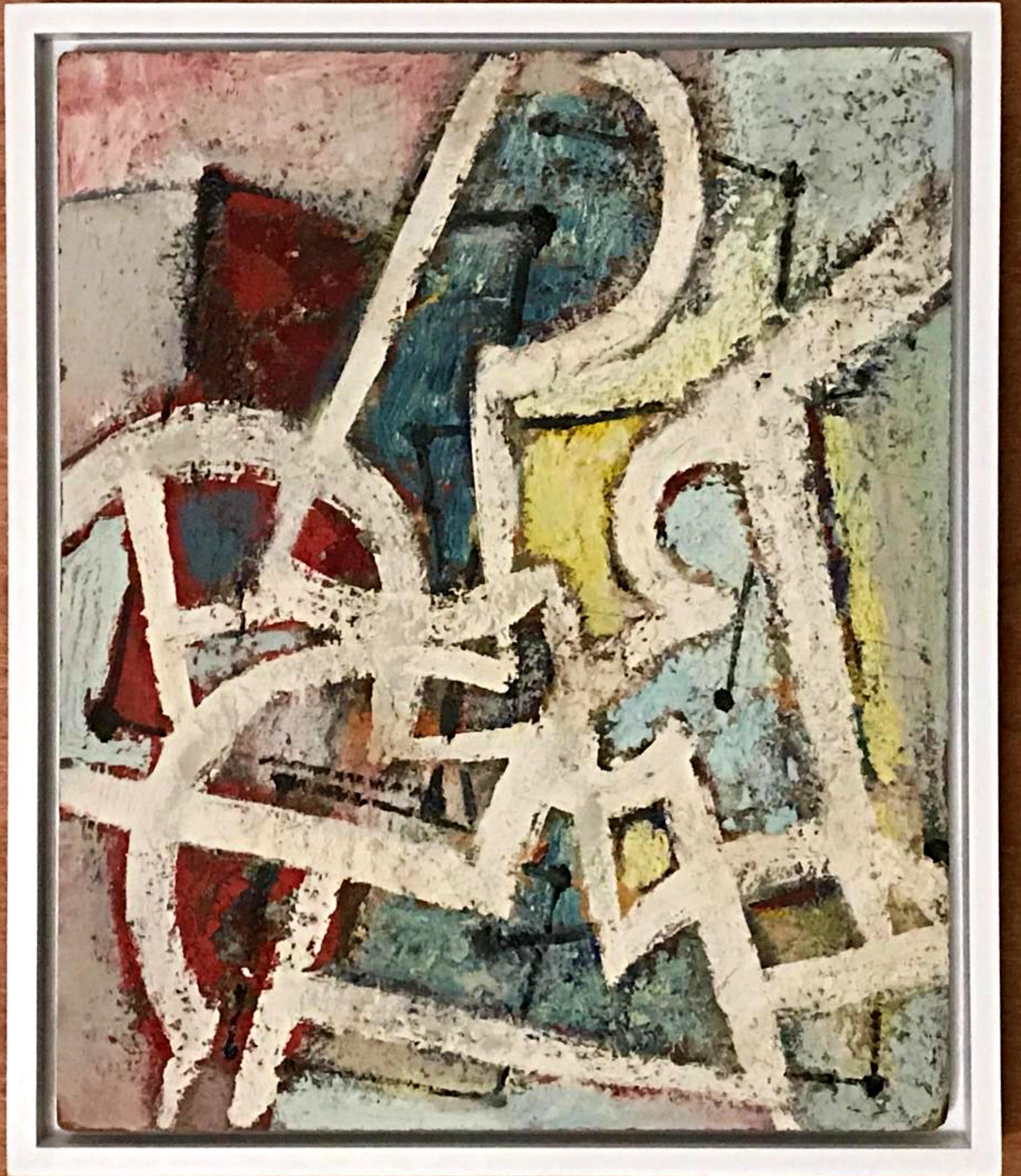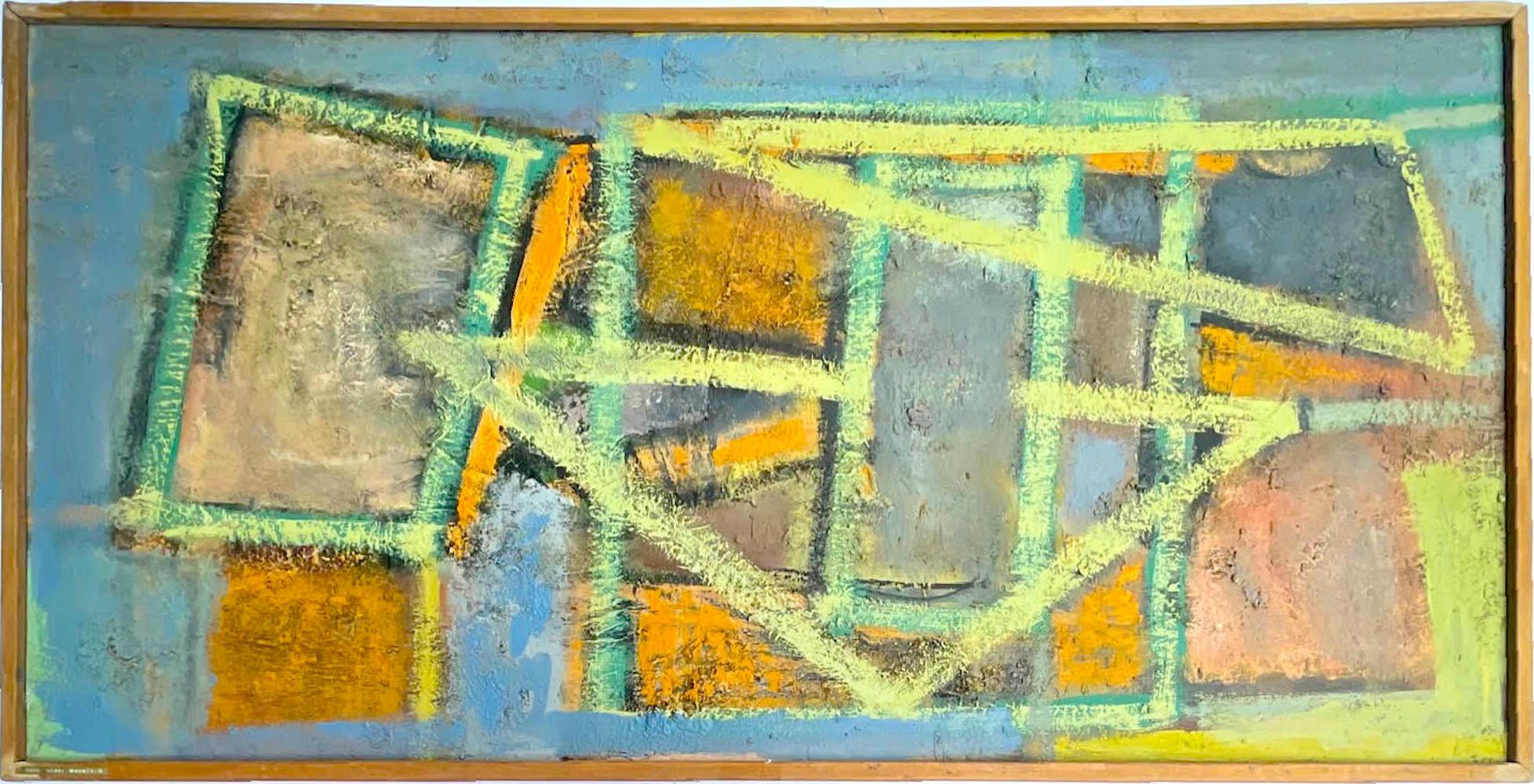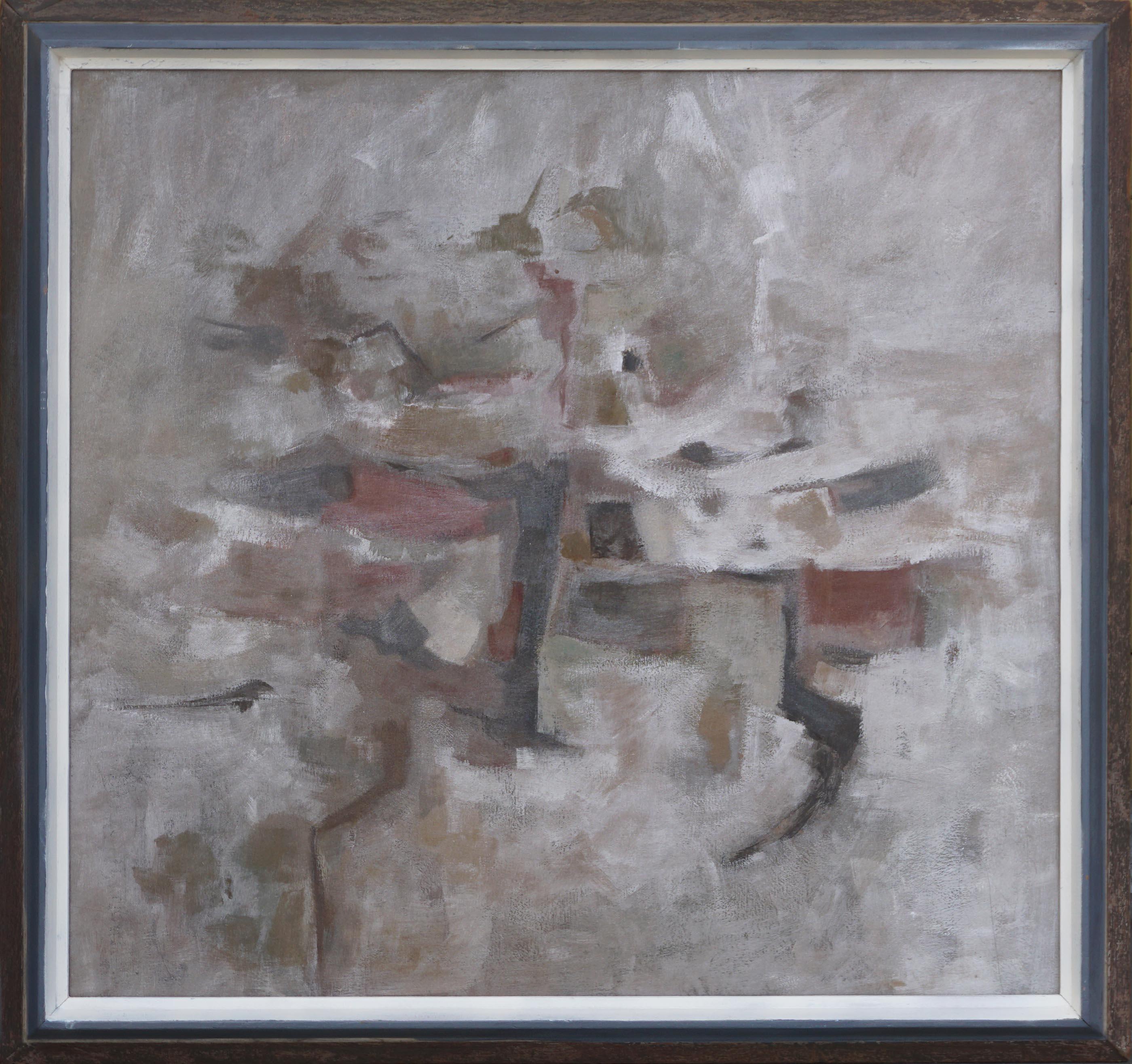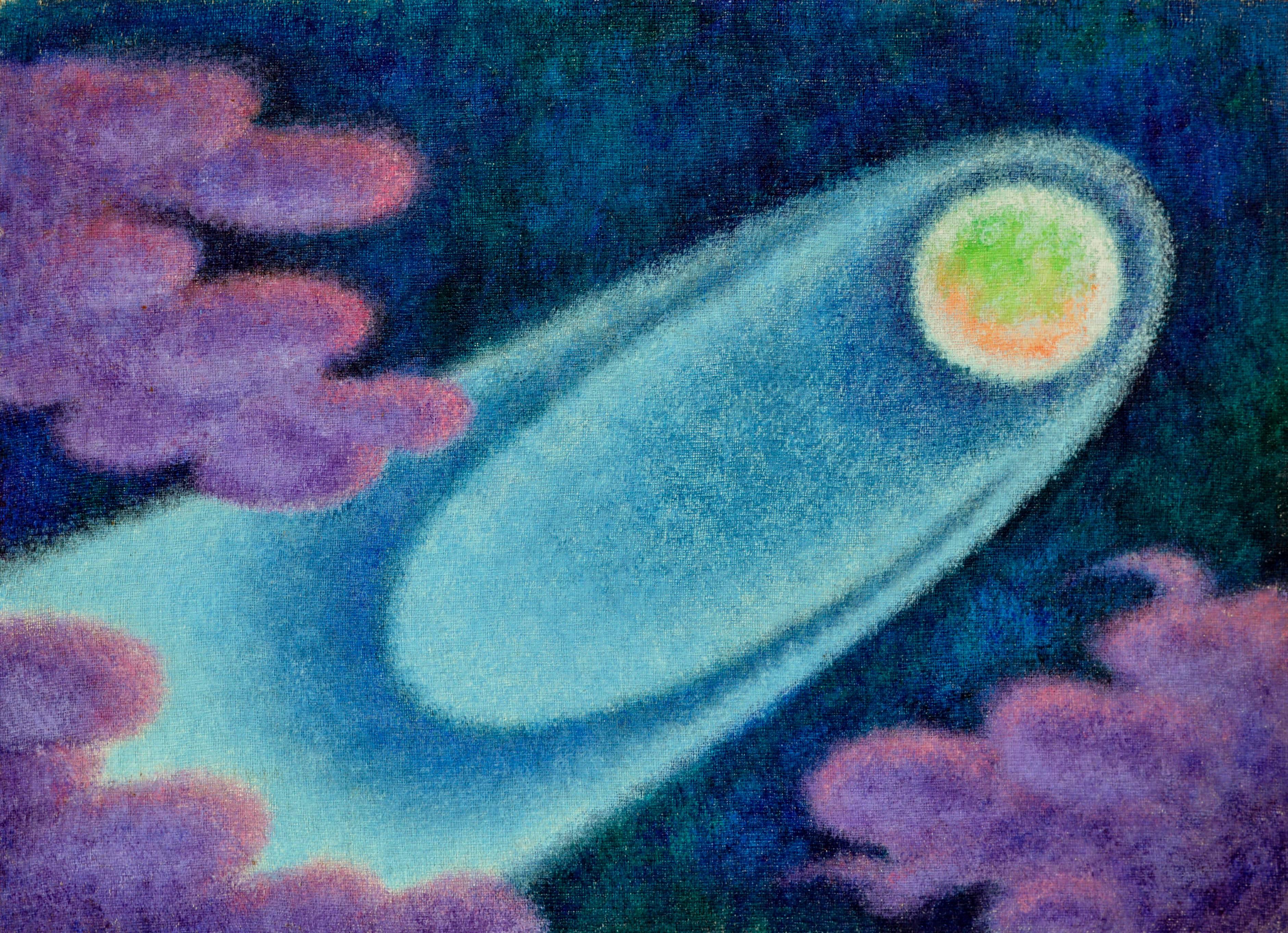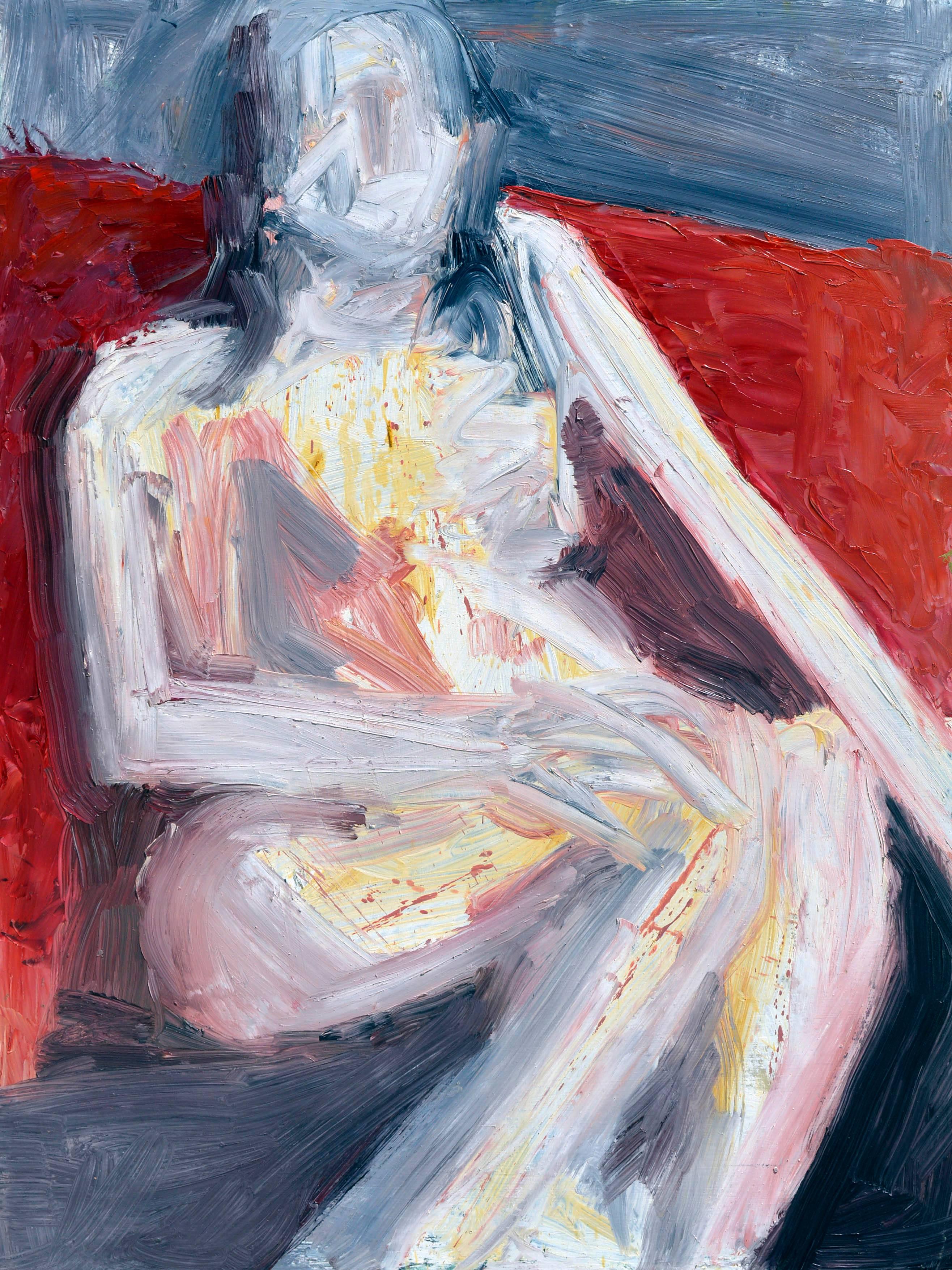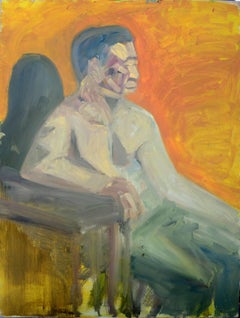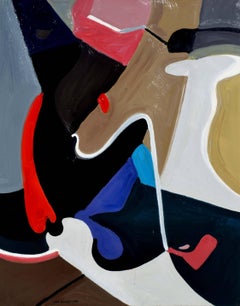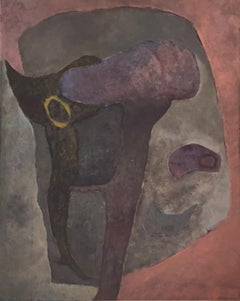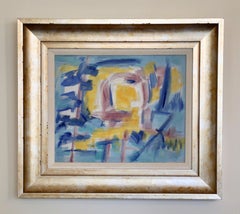
Colorful Abstract Oil on Masonite Titled "Summer"
View Similar Items
1 of 9
Theodore HiosColorful Abstract Oil on Masonite Titled "Summer"1952
1952
About the Item
- Creator:Theodore Hios (1910, American)
- Creation Year:1952
- Dimensions:Height: 15.75 in (40.01 cm)Width: 18 in (45.72 cm)Depth: 2.13 in (5.42 cm)
- Medium:
- Movement & Style:
- Period:
- Condition:Very good estate condition. Professionally restored. Frame has some loss to corners but it is heavy, of excellent quality, and presents very well.
- Gallery Location:Providence, RI
- Reference Number:1stDibs: LU136426347982
You May Also LikeView All
- Abstract Expressionist Two Sided Painting -- Male FigurativeBy Daniel David FuentesLocated in Soquel, CADouble sided figurative abstract by San Jose, California area artist Daniel David Fuentes (American, 1978-2016). San Francisco bay area abstract expressionist and landscape artist du...Category
21st Century and Contemporary Abstract Expressionist Figurative Paintings
MaterialsMasonite, Oil
$1,175 Sale Price25% Off - Vertical Abstract #3 - "Ghostly Touching"By Leslie Luverne AndersonLocated in Soquel, CADynamic abstract expressionist painting by Les (Leslie Luverne) Anderson (American, 1928-2009).Oil on masonite. Titled "Ghostly Touching" on verso. Signed "Les Anderson" bottom left....Category
1960s Abstract Expressionist Abstract Paintings
MaterialsMasonite, Oil
- The Two FuriesBy Theodoros StamosLocated in Long Island City, NYCompleted when the artist was only 25, this painting references a fight between two mythological figures. Commonly called Furies, the Erinyes or Eumenides were Greek goddesses of ven...Category
1940s Abstract Expressionist Abstract Paintings
MaterialsMasonite, Oil
Price Upon Request - ByzantiumBy Ben WilsonLocated in New York, NYBen Wilson Byzantium, 1975 Oil on Masonite painting Hand signed reverse, Titled, "Byzantium", dated 1975 by the artist and also with estate stamp - in addition to Ben Wilson's hand signature Frame included: elegantly framed in a handmade white wood frame with UV plexiglass This painting is done by the second generation Abstract Expressionist artist Ben Wilson - one of the youngest artists to be given a show at ACA Gallery in 1940. The work is signed by the artist on the back and also signed with the Estate Stamp and signature on the back. Ben Wilson was born in Philadelphia in 1913 to Jewish parents who had emigrated from Kiev and settled in New York City. He was educated in Manhattan public schools and graduated from City College in 1935. To gain exposure to a wider range of styles, he also studied at the National Academy of Design and at the Educational Alliance. Admired by critics throughout his long career, Wilson was singled out as a “discovery” by the New York Times art critic Edward Alden Jewel even before his first one-man show at the Galerie Neuf in 1946. His paintings of the ’30s and ’40s were expressionistically rendered, often Biblical parables, filled with what he called “the grief of the intolerable” and reflecting an acute awareness of the agony of the time, from the Holocaust to the Spanish Civil War. A WPA artist who identified strongly with the plight of the Jews in Europe, he relentlessly explored themes of war, torment, and futility in his early decades of painting. When times changed and social pressures subsided, Wilson’s mood lifted. He spent 1952-54 in Paris working at the Academie Julien. During the ’50s his involvement with specific imagery persisted but became more psychological and mythic in orientation. Influenced by Cubism, he created a vocabulary of interlocking shapes and bold, sweeping gestures that served as a transition between his early figurative expressionism and his later abstract constructivist concerns. Towards the end of the decade Wilson reached a crossroads, moving towards abstraction and searching for what he called “a scaffolding under the externals.” By 1960, influenced by the Russian Constructivists, Mondrian, and Abstract Expressionism, Wilson turned to abstraction. Reexamining the basic elements of painting, he evolved his own personal vocabulary and structure, fusing the cerebral and the emotive. He became increasingly experimental, using house paint, sand, and other unorthodox materials in paintings that he worked from all directions, dripping, spraying, stenciling, and collaging. He employed elements of disjunction, repetitions of geometric motifs, linear networks, and complex overlays to create the transparent, multi-layer development of space that characterizes his later paintings. A consummate draftsman, Wilson filled notebook after notebook with drawings that he amplified in his paintings. Eschewing popular movements, Wilson was always one to pursue a personal aesthetic. Despite more than 30 one-man shows and 50 years of teaching, he increasingly withdrew from the gallery scene but continued to paint daily until his death at age 88 in 2001 in Blairstown, New Jersey, where he and his sculptor wife Evelyn Wilson...Category
1970s Abstract Expressionist Abstract Paintings
MaterialsMasonite, Oil
$12,000 - Rock Candy Mountain (unique, signed Abstract Expressionist painting)By Ben WilsonLocated in New York, NYBen Wilson Rock Candy Mountain, ca. 1970 Oil on masonite board (Hand Signed, titled and dated) Hand signed, titled and dated by Ben Wilson on the back Frame Included: held in artist's original vintage 1970 wood frame This stunning painting with candy colors is done by the second generation Abstract Expressionist artist Ben Wilson - one of the youngest artists to be given a show at prestigious ACA Gallery in 1940. In 2017, he was the subject of a career retrospective at the George Segal Gallery at Montclair State University from September 6 to November 4 and it was accompanied by a catalogue. Measurements: Frame: 23.5 x 47.5 x 1 inch Artwork: 25 x 49 inches About Ben Wilson: Ben Wilson was born in Philadelphia in 1913 to Jewish parents who had emigrated from Kiev and settled in New York City. He was educated in Manhattan public schools and graduated from City College in 1935. To gain exposure to a wider range of styles, he also studied at the National Academy of Design and at the Educational Alliance. Admired by critics throughout his long career, Wilson was singled out as a “discovery” by the New York Times art critic Edward Alden Jewel even before his first one-man show at the Galerie Neuf in 1946. His paintings of the ’30s and ’40s were expressionistically rendered, often Biblical parables, filled with what he called “the grief of the intolerable” and reflecting an acute awareness of the agony of the time, from the Holocaust to the Spanish Civil War. A WPA artist who identified strongly with the plight of the Jews in Europe, he relentlessly explored themes of war, torment, and futility in his early decades of painting. When times changed and social pressures subsided, Wilson’s mood lifted. He spent 1952-54 in Paris working at the Academie Julien. During the ’50s his involvement with specific imagery persisted but became more psychological and mythic in orientation. Influenced by Cubism, he created a vocabulary of interlocking shapes and bold, sweeping gestures that served as a transition between his early figurative expressionism and his later abstract constructivist concerns. Towards the end of the decade Wilson reached a crossroads, moving towards abstraction and searching for what he called “a scaffolding under the externals.” By 1960, influenced by the Russian Constructivists, Mondrian, and Abstract Expressionism, Wilson turned to abstraction. Reexamining the basic elements of painting, he evolved his own personal vocabulary and structure, fusing the cerebral and the emotive. He became increasingly experimental, using house paint, sand, and other unorthodox materials in paintings that he worked from all directions, dripping, spraying, stenciling, and collaging. He employed elements of disjunction, repetitions of geometric motifs, linear networks, and complex overlays to create the transparent, multi-layer development of space that characterizes his later paintings. A consummate draftsman, Wilson filled notebook after notebook with drawings that he amplified in his paintings. Eschewing popular movements, Wilson was always one to pursue a personal aesthetic. Despite more than 30 one-man shows and 50 years of teaching, he increasingly withdrew from the gallery scene but continued to paint daily until his death at age 88 in 2001 in Blairstown, New Jersey, where he and his sculptor wife Evelyn Wilson...Category
1970s Abstract Expressionist Abstract Paintings
MaterialsPermanent Marker, Oil, Masonite
- Bold German American Abstract Expressionist Color Field Oil Painting Carl HoltyBy Carl HoltyLocated in Surfside, FLCarl Robert Holty (American 1900-1973) Abstract Expressionism Oil on Masonite board. Abstract with greens blues and red, Dimensions 12 x 9-1/2 inches. Framed 17 X 14 inches Hand...Category
20th Century Abstract Expressionist Abstract Paintings
MaterialsMasonite, Oil
Recently Viewed
View AllMore Ways To Browse
Brownstone Painting
World Rally
Vintage Union Pacific
Last Combat
Vintage Brownstones
Louise Nevelson Wood
Psychedelic Light
William H Turner
African Fish
French Neo Gothic
French Painting French Flag
Fresh Couture
Large Abstract Barn
Mary Judge Artist
Oil On Slate
Old Philadelphia Sculpture
Small Triptychs
Vintage Arkansas

